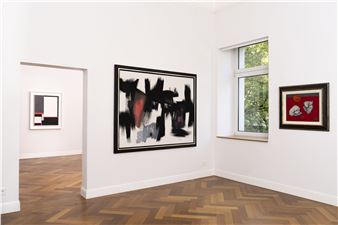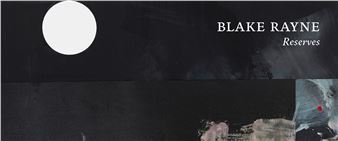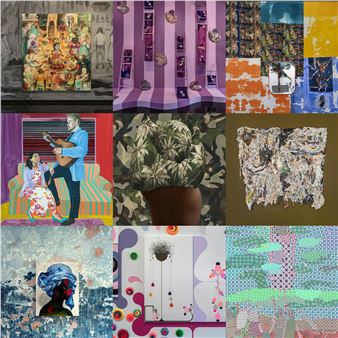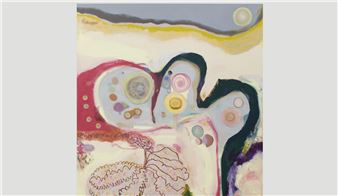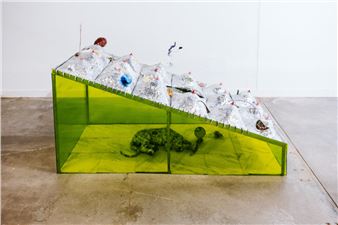Steve DiBenedetto: Evidence of Everything
In a career that spans three decades, Steve DiBenedetto (b. 1958, Bronx, New York) has established himself as an idiosyncratic artist who has brought the pursuit of painting into the unpredictable chaos and flux that categorize the Post-Modern world. Evidence of Everything is his first major solo museum exhibition. DiBenedetto has consistently rejected formalism throughout an era where both formal and conceptual approaches to painting have become de rigueur, taking a position where the canvas and the act of painting initiate a site for struggle, invention, and, ultimately, reinvention. Utilizing an inventory of leitmotifs, including the helicopter, octopus, wheel, and glass office tower, DiBenedetto paints and repaints his subjects in states of apocalyptic trauma where content and technique become unified, while the boundaries between the objective and subjective become uncertain. The artistãs work has prophetic, philosophical, and mystical undercurrents, with imagery often forming geometric webs or mandala-like vortices that tear themselves apart only to recongeal in thick, spectral passages of paint. Through his work, DiBenedetto has cast himself as a kind of baroque symbolist, working in the deep tradition of European Romanticism, with his excesses tempered by a terrible, yet transcendental beauty. ãYou never know what is enough,ã wrote William Blake, ãunless you know what is more than enough.ã Marked by both foresight and revelation, DiBenedettoãs painting exists in a continuum that flows from Blake to speculative novelist William Gibson. Curated by Richard Klein
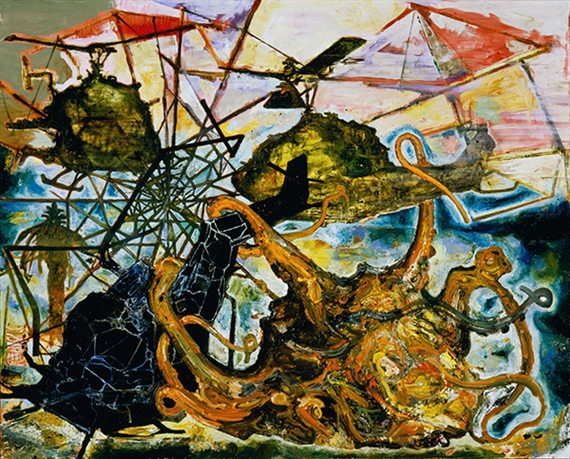
Recommended for you
In a career that spans three decades, Steve DiBenedetto (b. 1958, Bronx, New York) has established himself as an idiosyncratic artist who has brought the pursuit of painting into the unpredictable chaos and flux that categorize the Post-Modern world. Evidence of Everything is his first major solo museum exhibition. DiBenedetto has consistently rejected formalism throughout an era where both formal and conceptual approaches to painting have become de rigueur, taking a position where the canvas and the act of painting initiate a site for struggle, invention, and, ultimately, reinvention. Utilizing an inventory of leitmotifs, including the helicopter, octopus, wheel, and glass office tower, DiBenedetto paints and repaints his subjects in states of apocalyptic trauma where content and technique become unified, while the boundaries between the objective and subjective become uncertain. The artistãs work has prophetic, philosophical, and mystical undercurrents, with imagery often forming geometric webs or mandala-like vortices that tear themselves apart only to recongeal in thick, spectral passages of paint. Through his work, DiBenedetto has cast himself as a kind of baroque symbolist, working in the deep tradition of European Romanticism, with his excesses tempered by a terrible, yet transcendental beauty. ãYou never know what is enough,ã wrote William Blake, ãunless you know what is more than enough.ã Marked by both foresight and revelation, DiBenedettoãs painting exists in a continuum that flows from Blake to speculative novelist William Gibson. Curated by Richard Klein
Artists on show
Contact details


 ARTISTS
ARTISTS









